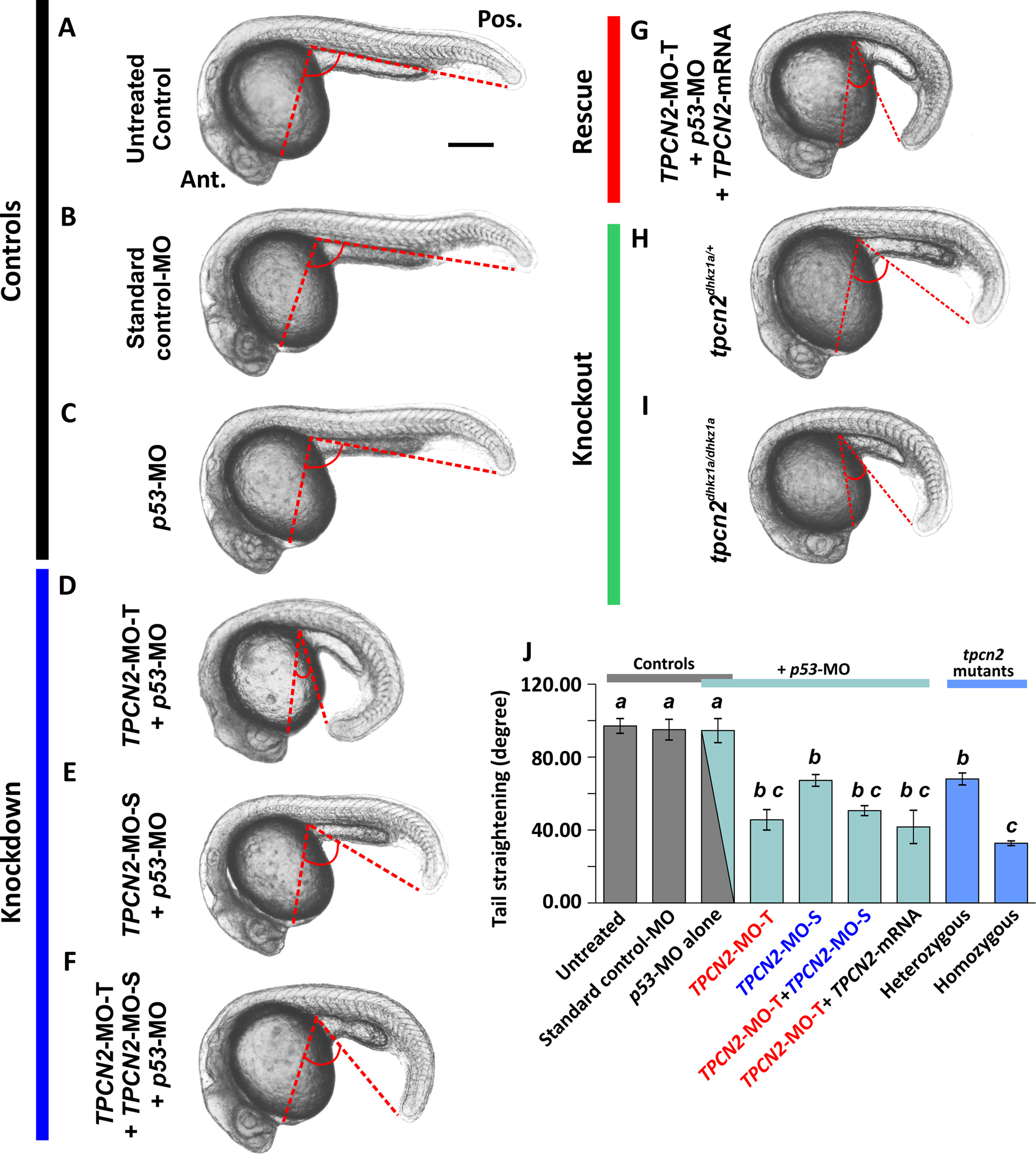Fig. S1
Effect of MO-based knockdown (without and with mRNA rescue) and CRISPR/Cas9-knockout of TPC2 on the gross morphology of embryos at ~25 hpf. Embryos were (A) untreated or (B-F) injected with: (B) ~5 ng standard control-MO; (C) ~7.5 ng p53-MO; (D) ~2.5 ng TPCN2-MO-T with p53-MO; (E) ~5 ng TPCN2-MO-S with p53-MO; (F) ~1.3 ng TPCN2-MO-T+~2.5 ng TPCN2-MO-S with p53-MO; or (G) ~2.5 ng TPCN2-MO-T with p53-MO and ~50 pg tpcn2 mRNA. In addition, representative (H) heterozygous and (I) homozygous tpcn2 mutants are shown. Bright-field images were collected of all the embryos at ~25 hpf and the tail straightening angle was measured. Ant. and Pos. in panel A are anterior and posterior, respectively. (J) Quantification of the tail straightening angle. This bar chart shows the mean ±SEM tail straightening angle from n≥3 embryos in each group. Statistical analysis was carried out using one-way ANOVA and significance differences (at p<0.05) as shown by the different letters, a to c, was determined using the Tukey’s post hoc method. Thus, significant differences between groups were denoted by a different letter, whereas groups where no significant differences were observed had the same letter.
Reprinted from Developmental Biology, 425(2), Kelu, J.J., Webb, S.E., Parrington, J., Galione, A., Miller, A.L., Ca2+ release via two-pore channel type 2 (TPC2) is required for slow muscle cell myofibrillogenesis and myotomal patterning in intact zebrafish embryos., 109-129, Copyright (2017) with permission from Elsevier. Full text @ Dev. Biol.

